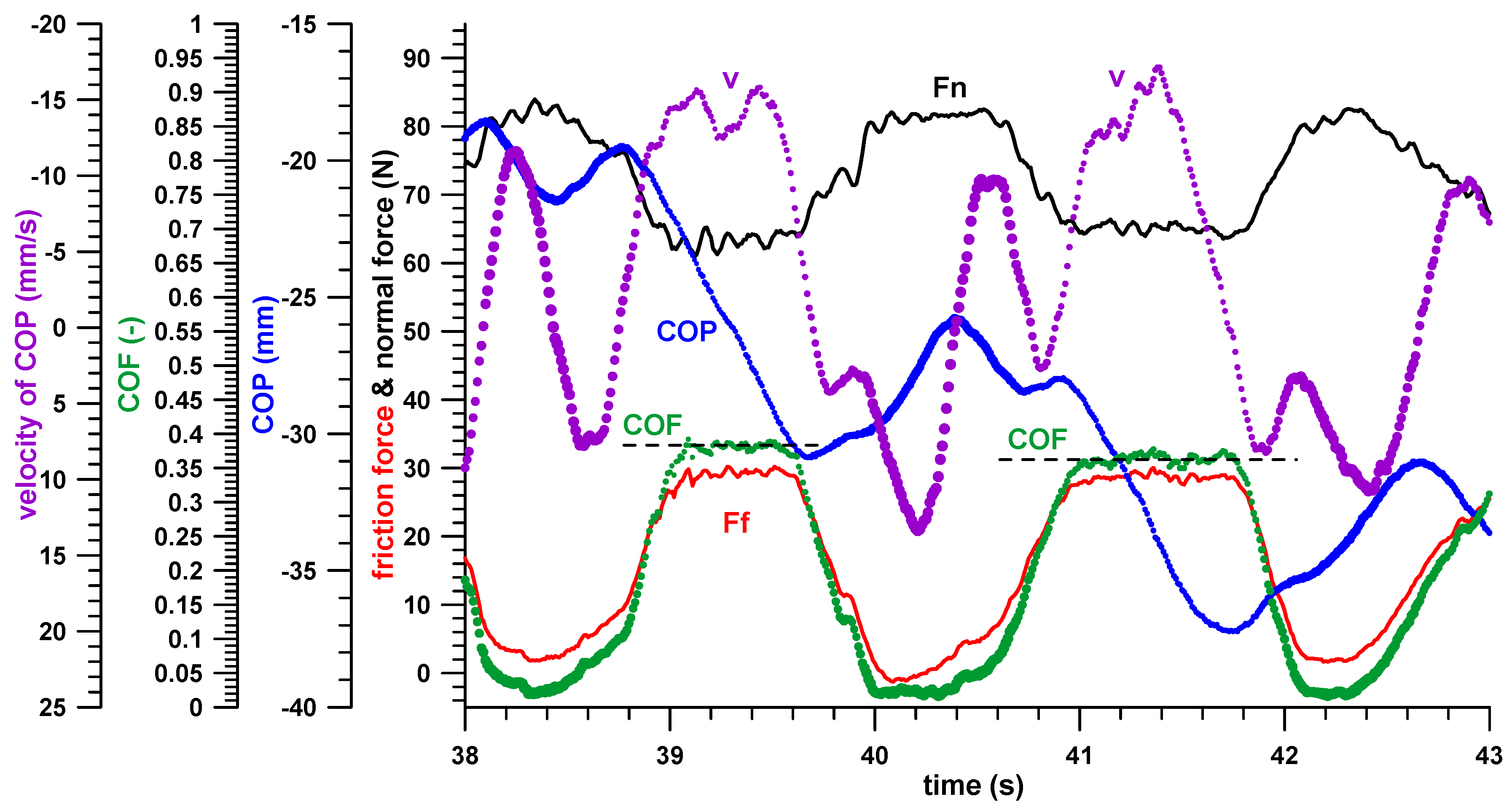The Coefficient of Friction of Soccer Balls †
Abstract
:1. Introduction
2. Materials and Methods
3. Results
4. Discussion
Acknowledgments
Conflicts of Interest
References
- Asai, T.; Carre, M.J.; Akatsuka, T.; Haake, S.J. The Curve Kick of a Football I: Impact with the Foot. Sport. Eng. 2002, 5, 183–192. [Google Scholar] [CrossRef]
- Sterzing, T.; Hennig, E.M. The Influence of Soccer Shoes on Kicking Velocity in Full-Instep Kicks. Exerc. Sport Sci. Rev. 2008, 36, 91–97. [Google Scholar] [CrossRef] [PubMed]
- Sterzing, T.; Hennig, E.M. The Influence of Friction Properties of Shoe Upper Materials on Kicking Velocity in Soccer. J. Biomech. 2007, 40, S195. [Google Scholar] [CrossRef]
- Stronge, W.J.; Ashcroft, A.D.C. Oblique Impact of Inflated Balls at Large Deflections. Int. J. Impact Eng. 2007, 34, 1003–1019. [Google Scholar] [CrossRef]
- Carre, M.J.; Asai, T.; Akatsuka, T.; Haake, S.J. The Curve Kick of a Football II: Flight through the Air. Sport. Eng. 2002, 5, 193–200. [Google Scholar] [CrossRef]
- Ishii, H.; Sakurai, Y.; Maruyama, T. Effect of Soccer Shoe Upper on Ball Behaviour in Curve Kicks. Sci. Rep. 2014, 4, 1–8. [Google Scholar] [CrossRef] [PubMed]
- Cotton, R.T. Surface Interactions of Soccer Balls. Ph.D. Thesis, Loughborough University, Loughborough, UK, 2008. [Google Scholar]
- Alaways, L.; Krumenacker, N. Determining Friction Coefficients for Round Balls by Using Center-of-Pressure. Procedia Eng. 2012, 34, 491–495. [Google Scholar] [CrossRef]
- Huybers, P. Soccer Ball Geometry, a Matter of Morphology. Int. J. Space Struct. 2007, 22, 151–160. [Google Scholar] [CrossRef]
- Vilhena, L.; Ramalho, A. Friction of Human Skin against Different Fabrics for Medical Use. Lubricants 2016, 4, 6. [Google Scholar] [CrossRef]
- Fuss, F.K. Friction of a Pimpled Rugby Ball Surface: Force and Velocity Weakening and Strengthening of the Coefficient of Friction. Proc. Inst. Mech. Eng. Part J J. Eng. Tribol. 2012, 226, 598–607. [Google Scholar] [CrossRef]
- Shinkai, H.; Nunome, H.; Isokawa, M.; Ikegami, Y. Ball Impact Dynamics of Instep Soccer Kicking. Med. Sci. Sports Exerc. 2009, 41, 889–897. [Google Scholar] [CrossRef] [PubMed]
- Nunome, H.; Lake, M.; Georgakis, A.; Stergioulas, L.K. Impact Phase Kinematics of Instep Kicking in Soccer. J. Sports Sci. 2006, 24, 11–22. [Google Scholar] [CrossRef]





Publisher’s Note: MDPI stays neutral with regard to jurisdictional claims in published maps and institutional affiliations. |
© 2020 by the authors. Licensee MDPI, Basel, Switzerland. This article is an open access article distributed under the terms and conditions of the Creative Commons Attribution (CC BY) license (https://creativecommons.org/licenses/by/4.0/).
Share and Cite
Tan, A.M.; Weizman, Y.; Alam, F.; Fuss, F.K. The Coefficient of Friction of Soccer Balls. Proceedings 2020, 49, 92. https://doi.org/10.3390/proceedings2020049092
Tan AM, Weizman Y, Alam F, Fuss FK. The Coefficient of Friction of Soccer Balls. Proceedings. 2020; 49(1):92. https://doi.org/10.3390/proceedings2020049092
Chicago/Turabian StyleTan, Adin Ming, Yehuda Weizman, Firoz Alam, and Franz Konstantin Fuss. 2020. "The Coefficient of Friction of Soccer Balls" Proceedings 49, no. 1: 92. https://doi.org/10.3390/proceedings2020049092
APA StyleTan, A. M., Weizman, Y., Alam, F., & Fuss, F. K. (2020). The Coefficient of Friction of Soccer Balls. Proceedings, 49(1), 92. https://doi.org/10.3390/proceedings2020049092






